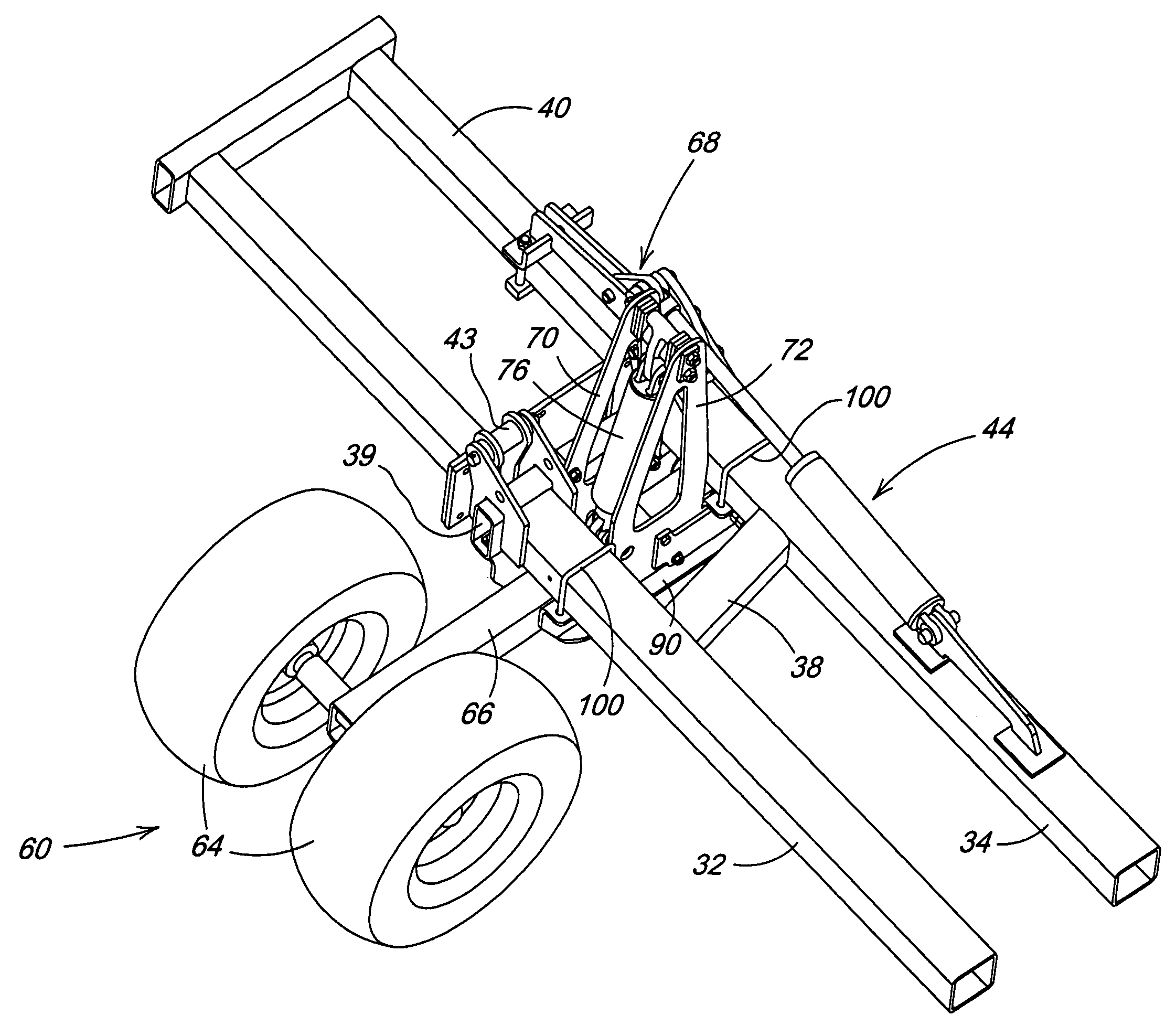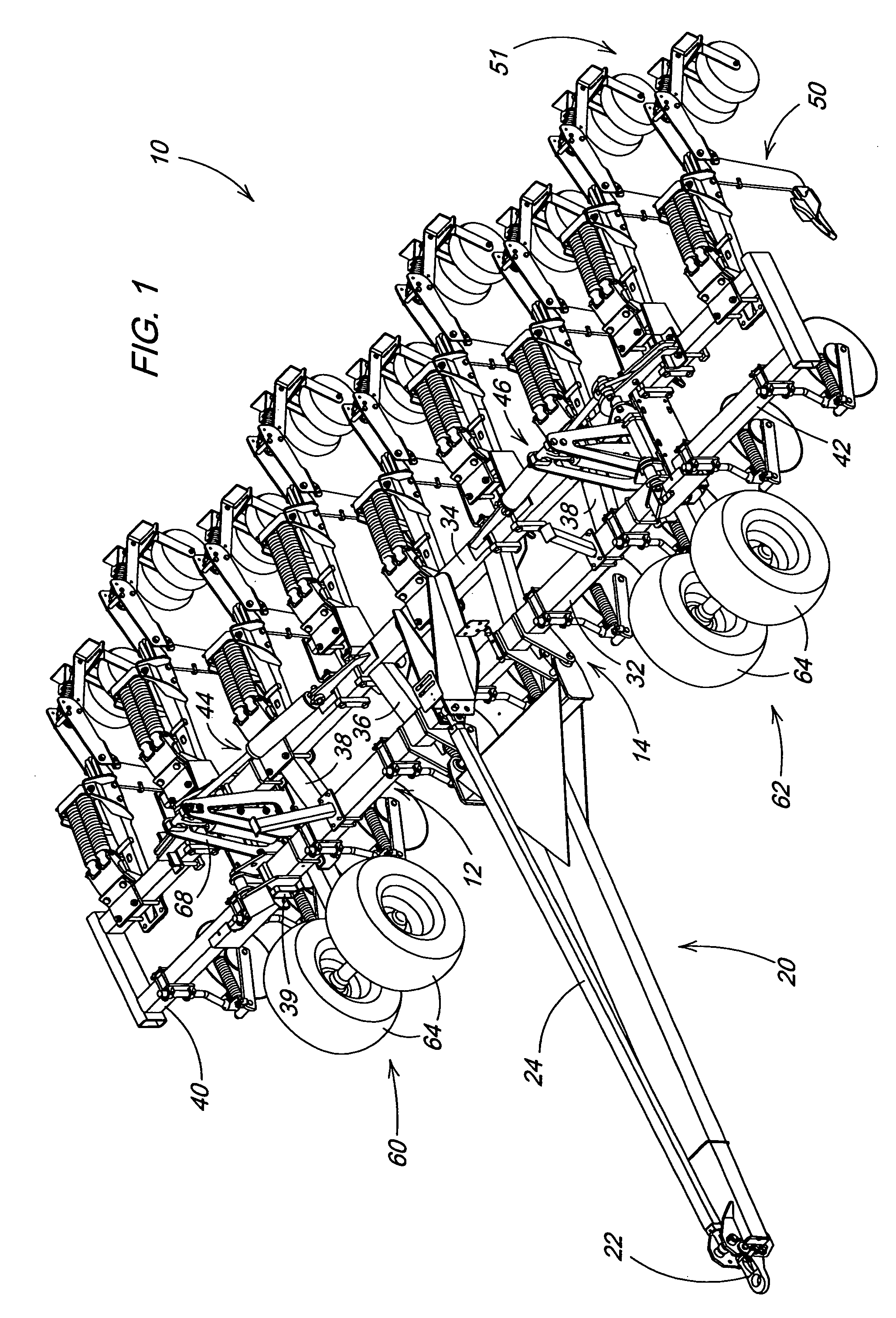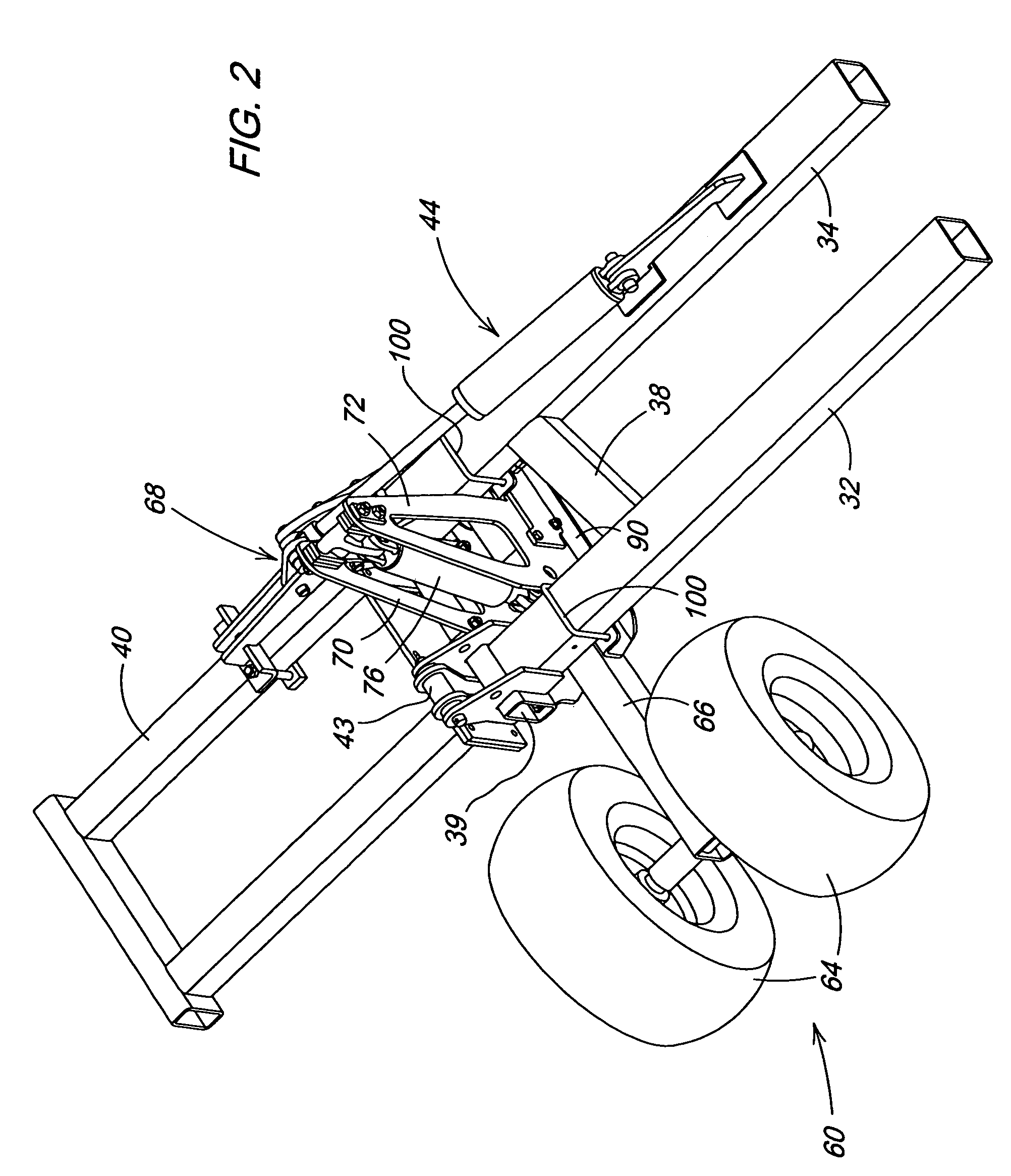Structure for converting an integral implement to a drawn type
a technology of integral implements and structures, applied in the field of wheel structures, can solve the problems of unstable transport conditions, high vertical hitch loads, and undesirable conditions of the pull-type attachment, and achieve the effect of improving the attachment structur
- Summary
- Abstract
- Description
- Claims
- Application Information
AI Technical Summary
Benefits of technology
Problems solved by technology
Method used
Image
Examples
Embodiment Construction
[0017]Referring now to FIG. 1, therein is shown an implement 10 such as a ripper or similar deep tillage implement having a main frame 12 and conventional three-point hitch structure 14 adapted for attachment to a three-point hitch (not shown) on a tractor or other towing vehicle. The implement 10 is shown with attachments for conversion to a towed implement. A hitch 20 is pivotally connected at a rearward end to the lower two attaching points of the three-point hitch structure 14. A standard towing connection 22 for attachment to the tractor drawbar is connected to the forward end of the hitch 20. A leveling link 24 extends between the towing connection 22 and the upper connection of the three point hitch structure 14 to provide a generally rigid but adjustable hitch connection to the frame 12.
[0018]The frame 12 as shown includes transversely extending front and rear frame members 32 and 34 connected by generally fore-and-aft extending frame members such as shown at 36 and 38 and b...
PUM
 Login to View More
Login to View More Abstract
Description
Claims
Application Information
 Login to View More
Login to View More - R&D
- Intellectual Property
- Life Sciences
- Materials
- Tech Scout
- Unparalleled Data Quality
- Higher Quality Content
- 60% Fewer Hallucinations
Browse by: Latest US Patents, China's latest patents, Technical Efficacy Thesaurus, Application Domain, Technology Topic, Popular Technical Reports.
© 2025 PatSnap. All rights reserved.Legal|Privacy policy|Modern Slavery Act Transparency Statement|Sitemap|About US| Contact US: help@patsnap.com



